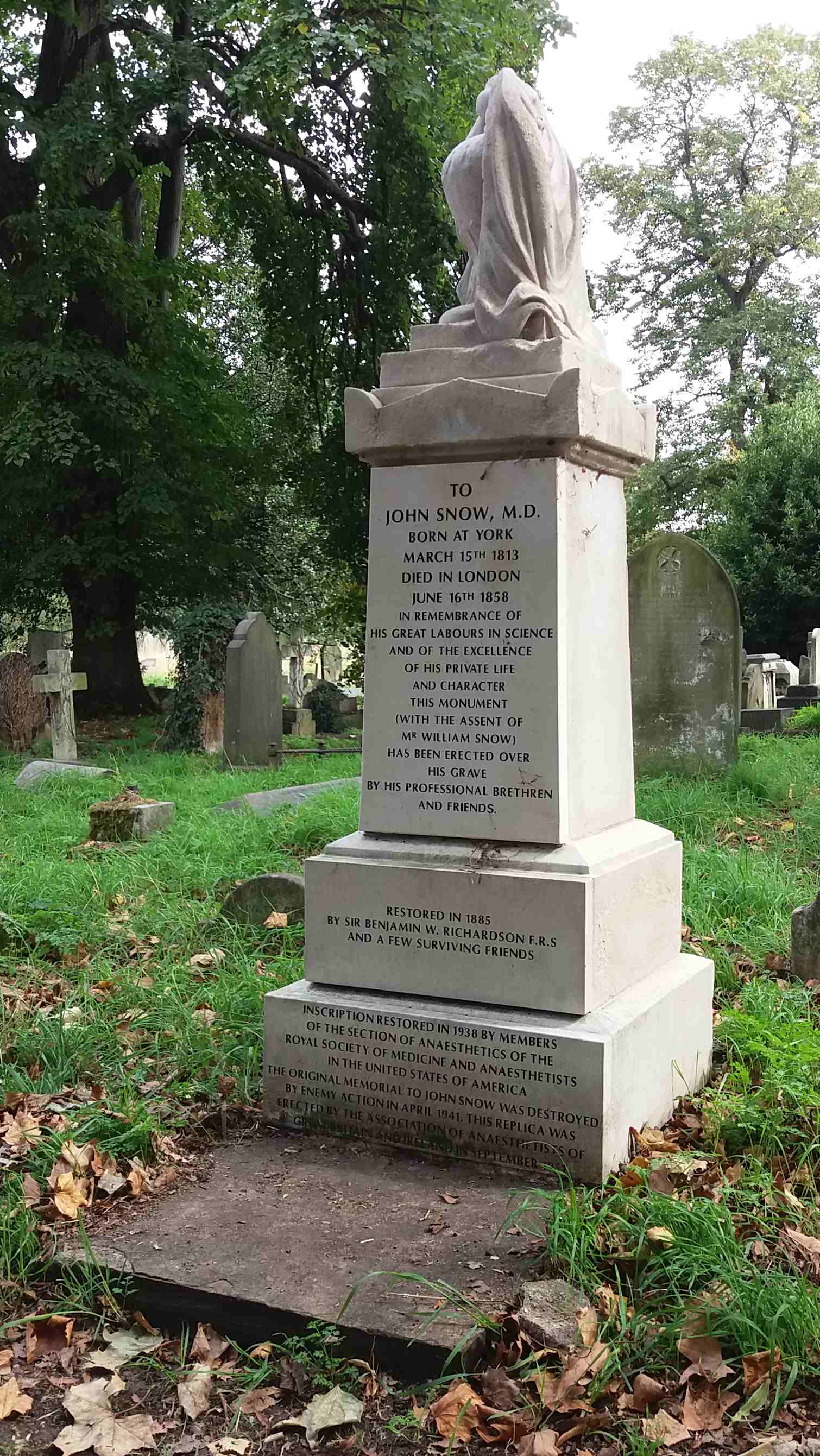Home >>
John Snow, epidemiologist and anaesthiologist
This is the grave of John Snow (1813-1858) who is recognised as one of the first people to practice the science of epidemiology, the study of the distribution and determinants of disease. It is an important science in these times of Covid-19.
In 1854 there was an outbreak of cholera around Golden Square in Soho, an area in central London. In those days it was thought that infectious diseases were caused by breathing ‘miasma’ or bad air. The people living on Highgate Hill, where the air was cleaner, were less likely to become ill than people living near the river, which was heavily polluted with sewage. In the summer of 1858 Parliament was suspended because of the stench from the River Thames.
John Snow plotted on a map of Golden Square the houses in which people had died of cholera during the outbreak and noted that many of them obtained their water from the same handpump. There were fewer deaths among people who obtained their water from a different handpump, which was supplied with water by a different company, drawn from a different source. Snow had no knowledge of microbes as a cause of disease but recommended that the handle should be removed from the pump to stop people drinking the water. It is likely that the peak of the outbreak had passed, but the number of new cases of cholera diminished. He later showed that people drinking water provided by a company which took it from the River Thames in London were 14 times more likely to develop cholera than people drinking water piped from a source outside the city. These observations contributed to the investments in the late 19th century to provide people with clean water to drink and the huge network of sewers under the city to remove human waste. This is the science of public health. The bacterium which causes cholera was described in a paper published in 1884.

John Snow's grave in Brompton Cemetery (click to enlarge)
John Snow is also recognised for his contribution to anaesthesiology, the study of anaesthetics. He administered chloroform to Queen Victoria during the birth of her eighth and ninth children, which demonstrated to people that it was safe.
John Snow made another, less well-known observation, which reveals his inquiring mind. He reported in a medical journal that children who ate bread that had been adulterated with aluminium salts to make it white were more likely to have rickets than children who ate wholemeal bread. He thought that the alum might bind irreversibly to phosphorus, a mineral which children need to make strong bones. He was probably right, but died of a stroke aged only 45 years, before he could investigate this hypothesis, and was buried down the path from here, near the north gate of Brompton Cemetery in West London, or What3Words: strain.choose.calls.
Epidemiology: what, who, when, where and why?